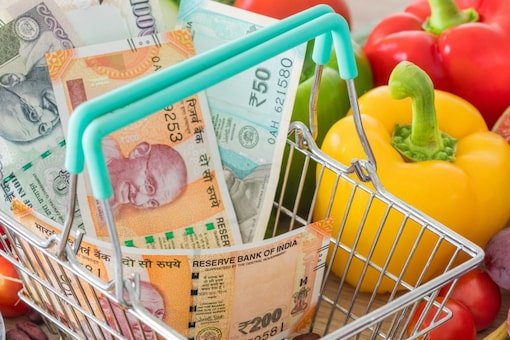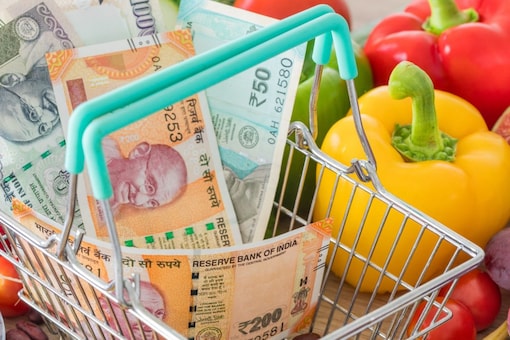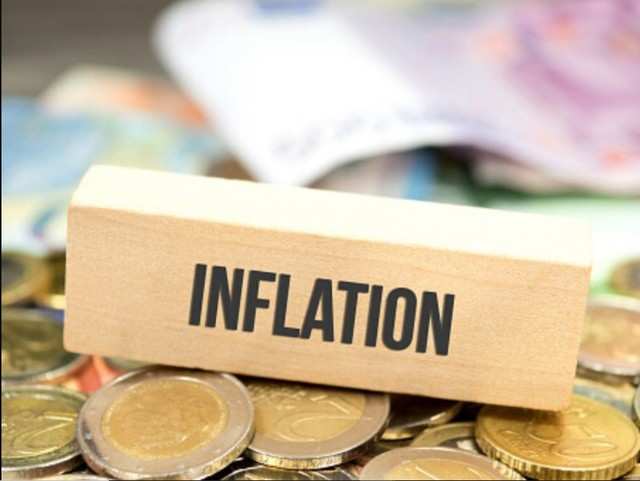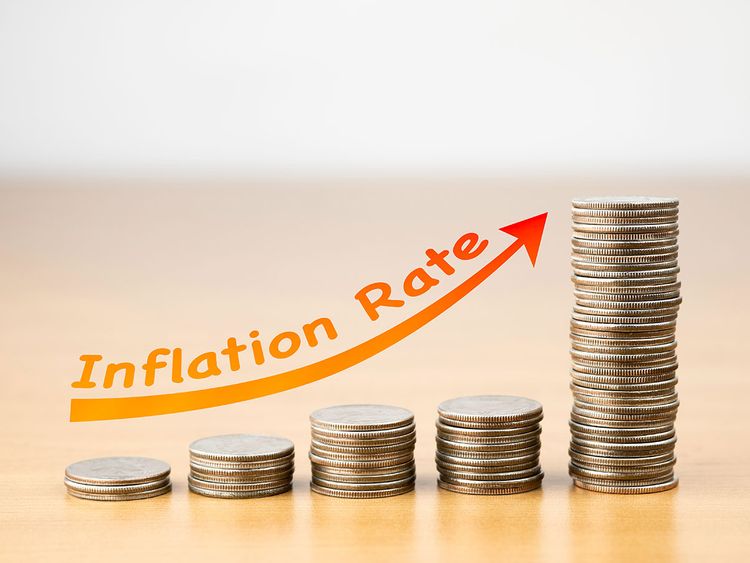Inflation cannot be managed only by financial regulation.

Nirmala Sitharaman said on Thursday that monetary policy tools such as interest rate increases used by several central banks would not suffice to cool inflation and that the Reserve Bank of India does not need to synchronize its actions “as much” with its counterparts in developed countries.
While monetary policy had been seen as “sacrosanct” as a means of controlling inflation, the minister stated that growth also deserved attention. Nations had espoused the monetary policy theory, which held that only higher interest rates could manage inflation, but it had been shown to be completely ineffective in containing price increases.
Why does one nation in that network have 79% [inflation] and why does one country in that network, which is the fountainhead of such a theory, have the most inflation in 40 years?” she posed rhetorically. “Why would other members of that circle of nations be facing 8%-9% [inflation] as well?” India’s experience with inflation demonstrated that many different elements need attention, and while the central bank and its tools such as interest rates are a “very significant part of it,” they cannot be the only ones, according to the minister.

I say this with responsibility. Yes, it is one of the instruments, but sometimes, for example, in India, if you leave the policymakers and go to the people on the ground, they would say, particularly in the current scenario, where economic growth must be unrestrained.
“The Reserve Bank (of India) will have to synchronize slightly, perhaps not as much as the other western industrialized countries.” “I am not prescribing or directing the RBI in any way, so please be cautious,” she remarked at an ICRIER meeting on “Taming Inflation.”
However, it is true that India’s strategy for controlling the economy, which includes dealing with inflation, is an exercise in which fiscal and monetary policy must collaborate. It cannot be left just to monetary policy, which has been shown to be completely ineffectual in many nations whose structures and economic profiles form the foundation of monetary policy theory, to fix everything on interest rates and claim that this is the only viable weapon for managing inflation.
“In today’s circumstances, India’s inflation management is an exercise of so many different activities, the majority of which are outside of monetary policy,” Ms. Sitharaman said, emphasizing that such an assertion from a country’s Finance Minister would have been considered “sacrilegious” previously.
“My experience shows that if you can equally attend to various other elements, for which I give credit to all previous administrations, since they also maintained change in the way the supply side is managed, how the majority of the people get all the required commodities at an acceptable price,” she added.
At a time when CPI inflation has remained above the RBI’s upper tolerance level of 6% for seven consecutive months and WPI inflation rates have reached their highest levels since January 2007, it is encouraging that the issue was finally discussed in parliament and the RBI’s recent rate hike signals recognition of the concern.
During the debate in parliament, however, the Treasury bench mostly agreed that there is no inflation in the country. If we ask the wealthiest 1% of the country, who owns 73% of all wealth, it is obvious that they will be unaffected. Inflation impacts the poor, middle class, and rural populations disproportionately.
Even before the epidemic, demand in the rural sector was stressed owing to worldwide lockdowns and disruptions. Looking at the inflation statistics, we can see that CPI has climbed at a faster rate in rural regions than in urban areas since December 2021.
This is especially troubling given the high unemployment rate and diminishing rural earnings. According to recent data, despite a drop in demand for MGNREGA jobs, work delivered under the plan is 27% higher than work provided in June 2019.
This demonstrates households’ reliance on MGNREGA in the lack of work opportunities. Nominal rural wages have similarly remained unchanged in the current fiscal year, while real wage growth has lagged behind the current rate of inflation, resulting in a net income reduction.
This has resulted in increased rural indebtedness. Rural indebtedness, at 84% in 2021, was over double that of urban indebtedness, at 42%.
Because of huge increases in the cost of vital products such as LPG, vegetables, and gasoline, among others, the cost of living for urban households has risen dramatically, while their buying power has diminished. Urban poor people, who account for 20% of the population, have probably suffered the most. According to CRISIL, effective inflation for urban poor families in January 2022 was 6.3%, 0.4% more than for the top 20% of urban households.
While government programs like LPG subsidies and PDS provide some protection against inflation, they exclude the middle class. For example, the PMUY plan only provides LPG subsidies to 9 crore recipients, leaving an estimated 16 crore middle-class households to absorb the high cost of gas cylinders.
Current inflationary pressures are not exclusively foreign-born. The proportion of gasoline to the CPI basket is just 10.5%, with food inflation accounting for the majority of the contribution (about 40%). Vegetables contributed the most to food inflation, accounting for 33.3% of the total.
When we examine the reasons for high vegetable prices, we observe that supply-side variables such as less availability owing to unseasonal rains, heat waves, and increased transportation costs—all domestic factors—contributed to the price pressure on food crops. As a result, a major portion of the current inflation is related to domestic supply-side problems, which must be addressed locally.
As a result of the epidemic, around 200 million people fell into poverty as a result. With current inflation, this figure will rise. As a result, a structural solution to the problem is required. Because food inflation lies at the heart of present inflationary pressures, monetary policy adjustments such as raising interest rates will have little influence.
It has the potential to exacerbate rural misery and growth.
Furthermore, given the current turbulent geopolitical climate, a weaker rupee, and higher import costs, the added cost to the exchequer would be significant. As a result, a fiscal policy consolidation plan is required to streamline non-capital spending.
India wastes over 40% of its agricultural output. To mitigate this, now is an excellent moment to construct end-to-end integrated micro cold chain systems from farm to market. The government should plan a national mission to establish such cold chain networks, not only to alleviate present inflationary pressures but also to reduce future seasonal changes in vegetable inflation.
Furthermore, it is no secret that climate change is altering weather patterns, directly affecting 55% of the country’s food basket. As a result, the government must expand its investment in climate-resilient agricultural methods and implement a unified institutional structure to decrease output unpredictability.
Finally, to alleviate the burden of inflation on the poor, free ration distribution should be extended beyond November, and PMAY housing should be made available to everybody. Furthermore, programs like Odisha’s “Biju Swasthya Suraksha Yojana,” in which health is guaranteed rather than merely covered, should be made available to all inhabitants.
Especially in rural regions, all of this would result in a decrease in household out-of-pocket spending.
Rural households would not only experience less suffering as a result of inflationary pressures but also be able to look for alternate sources of income as a result.
India’s rapid GDP growth does not imply that the country is ready for growth.
A 13.5% increase was recorded by India’s official statisticians in the quarter from April to June of this year.
As a result, the nation shot up to the top spot as the largest economy with the highest rate of growth in the world, surpassing Great Britain to take up the position. The positive news regarding India’s development potential, unfortunately, stops there. Given that India shut down during the same quarter last year because of the deadly Delta-driven COVID outbreak, those GDP estimates were disappointing; according to a Bloomberg survey of analysts, growth would have exceeded 15%.
In actuality, the GDP of India has increased by less than 4% since the last quarter before the epidemic and by just over 3% for the last three years. It’s doubtful that this fiscal year, which ends in March 2023, will set any records: most forecasters now predict that real growth won’t even hit 7% from a low base. You may find reasons for optimism if you seek them. For instance, capacity utilization in the manufacturing sector in India recently reached 75%, the highest level in over a decade.
Some economists believe this indicates that the private sector investment issue that has plagued the Indian macro-economy for the past ten years will no longer be a growth restriction. However, investment statistics as a share of inflation-adjusted GDP remain below average, 2.5 percentage points lower than they were before the epidemic.
Some Indian officials believe that the return of high investment and growth is just a matter of time and that the positive policy changes made over the past few years, such as the reform of indirect taxes and new industrial policies that place a stronger emphasis on domestic manufacturing, will pay off in the medium term.
India cannot afford to get complacent if it wants to resume on a high-growth track. The country’s policy mix still lacks an essential component: a thorough understanding of what investors want. In India, there are still not enough investible projects with the correct risk-return profile available in India in a world of increasing interest rates and risk-off attitude.
Less attention is paid to smaller businesses or those in the infrastructure sector, which contribute to employee development and overall economic expansion. Even international portfolio investors have observed that over the past ten years, Indian stocks have not outperformed the far more transparent US market in terms of returns.
That calls for putting into practice measures that are well known and have been promoted for years but have been put on hold in favor of more prominent subsidies and interventionist policies. For instance, judicial and administrative changes are no longer needed. In India, dispute resolution is still a nightmare.
In the World Bank’s 2020 Ease of Doing Business report, India ranked 163 in the world for contract enforcement. The average time needed to resolve business conflicts through the courts was 1,445 days. The Indian government insists that these figures have improved since the World Bank stopped releasing its independent assessments of the business environment.
However, there is still a legitimate fear of going to court among investors in India. Even the historic bankruptcy procedure for the government has slowed to a crawl; the National Company Law Tribunal said last month that it would only hear “urgent” cases since 30 of its 63 court spots remain vacant. Allowing more room for arbitration, especially international arbitration, would be one method to make up for the absence of judicial and administrative changes.
But during the past 10 years, India has reversed course, unilaterally exiting bilateral investment accords and making efforts to defend the primacy of regional tribunals. These actions should be corrected since they were bad ideas. The world’s mindset has changed. India has to show potential investors that their money would be safe and that they can earn decent returns there.
That necessitates a completely different set of adjustments than those the administration has felt secure making up to this point.
There is little likelihood that policymakers will raise private investment to the levels needed for sustained and transformational high growth unless they act quickly to change the general risk profile for investment in India.




